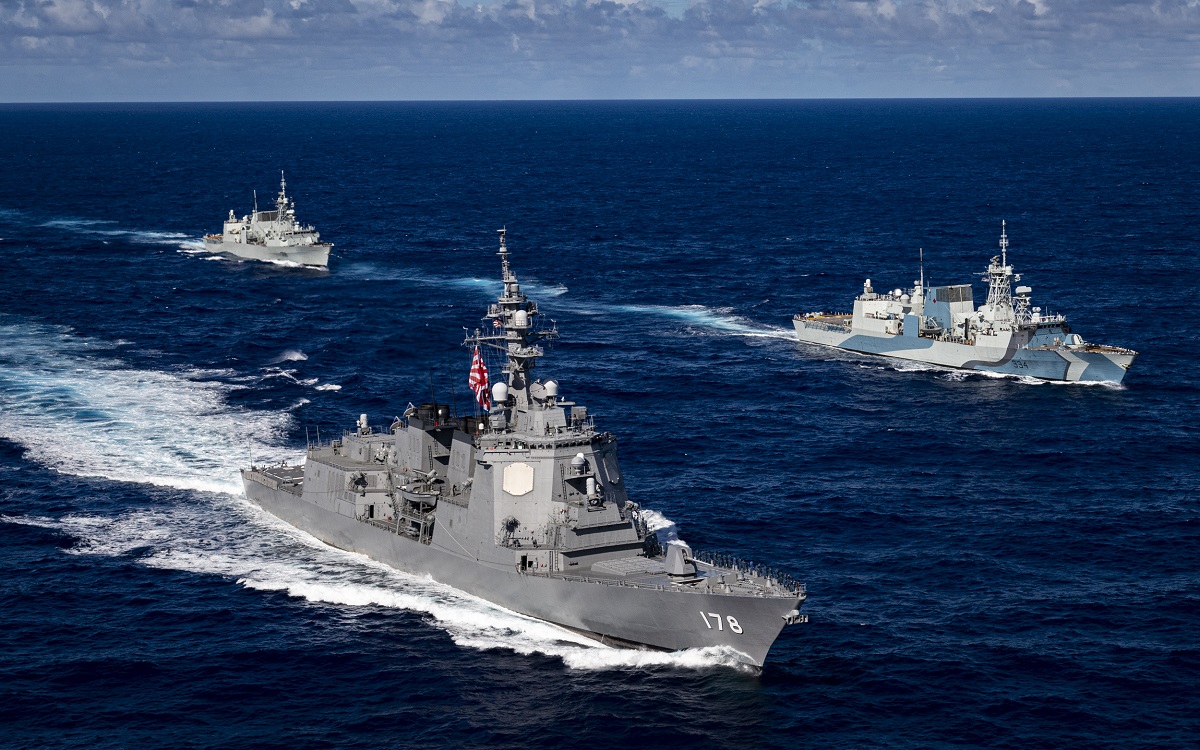Let me add to my prior post above:
9. An alternative to an ad hoc undertaking (which the Taiwanese will not give due to trust issues), is the entry into a legal framework like the FPDA (or NATO like in structure).
11. Entry into a fighting naval coalition is not a simple process and fraught with difficulty on escalation limits, National caveats, logistics compatibility, and/or other issues.
15. If the Japanese Prime Minister or the US President who wants to commit forces to show support, they will be faced with a real domestic politics dilemma (if it is not an invasion).
8. No help will be coming to Taiwan (and it is not even a member of the UN) unless there is a legal framework, like a status of forces agreement and the legal indemnities undertaken by Saudi Arabia with coalition forces during Gulf War I. We are talking months before any non-US help could or would come — for force prep and getting a legal framework in place for Taiwan to sign under duress.As for your last point, all free countries have the right to ask for outside assistance if they're attacked.
9. An alternative to an ad hoc undertaking (which the Taiwanese will not give due to trust issues), is the entry into a legal framework like the FPDA (or NATO like in structure).
(a) Even under the FPDA, which alllows for intelligence sharing, commitment of forces is not automatic. But the consultation process (for intervention) is speeded up and enabled for specific and planned military contingencies.
(b) After 9-11, NATO invoked Article 5 to enable the creation of the NATO led ISAF for Afghanistan. While that process was pretty fast, it took until Oct (almost a month), before invoking of Article 5 was announced. The process took until Dec 2001 by UN Resolution 1386, as envisaged by the Bonn Agreement for ISAF to be created.
No country, even the US is willing to enter into any treaty like agreement with Taiwan — due to inherent mistrust of all parties. The Taiwanese do not trust the Americans and vice versa. I would go so far as to say that the Taiwanese should not be trusted. IMO, it would be hard for the Taiwanese to strike a good deal with anyone.10. Not true. The Americans have a policy of strategic ambiguity that has been followed by four American presidents —Washington could take a judicious approach in such a situation. It could insist that China call off the attacks and could threaten military action—while quietly telling Taipei to retract any independence rhetoric if it expected American military help. Such a strategy might well work in quelling the conflict before it escalated enough to directly involve the US.Realistically it would be a mostly US force...
11. Entry into a fighting naval coalition is not a simple process and fraught with difficulty on escalation limits, National caveats, logistics compatibility, and/or other issues.
12. The China-Taiwan relationship is one of the most dangerous in the world....albeit maybe with some Japanese/Australian support.
- The Prime Ministers of Australia and Japan will treat it with proper care and be carefully balanced in their responses to Taiwan. Australian and Japanese responses to Mar 2010 ROKS Cheonan sinking and Nov 2010 bombardment of Yeonpyeong in Korea, were carefully balanced. These incidents with a US ally demonstrated that if the stakes are high enough, no one really dares to or wants to escalate. If the PLA(N) sinks a Taiwanese navy boat, no war is expected — the Taiwanese are not even American allies.
- Keep in mind that since Taiwan lost its United Nations seat as "China" in 1971 (replaced by the PRC), most sovereign states have switched their diplomatic recognition to the PRC, recognizing the PRC as the representative of all China, though the majority of countries avoid clarifying what territories are meant by "China" in order to associate with both the PRC and Taiwan.
- As of 20 September 2019, Taiwan maintains official diplomatic relations with about 14 UN member states and the Holy See, although informal relations are maintained with nearly all others.
- A simple commitment of forces or supply of weapons (to support Taiwan) by the Australians or the Japanese would be seen by the diplomatic community as mishandling the situation.
13. ASEAN as a community is not an Asian version of NATO and a much looser arrangement than the EU. Plus ADMM is not intended to be used that way — will need to review this in 20 years (in 2040).ASEAN could easily not even get involved at all.
14. But IMO, China does not want to invade — they are not so stupid to make such a strategic mistake that will bleed them dry. It is clear that the PLA has developed some interesting military capabilities should the use of force become necessary— it may simply be to shoot at the Taiwanese military or for the PLA(N) to apply military pressure in other ways (eg. a distant interdiction of trade routes). The Taiwanese are aware of the PLA(N)’s bombers that carry 400km YJ-12 ASCMs and 2000km CJ-20 ALCMs, which make the US made block 2, Harpoon missiles, in Taiwan’s inventory, look very short ranged by comparison.No one would be forced to intervene, but letting China take over Taiwan would be bad for everyone in Asia (except the CCP).
15. If the Japanese Prime Minister or the US President who wants to commit forces to show support, they will be faced with a real domestic politics dilemma (if it is not an invasion).

